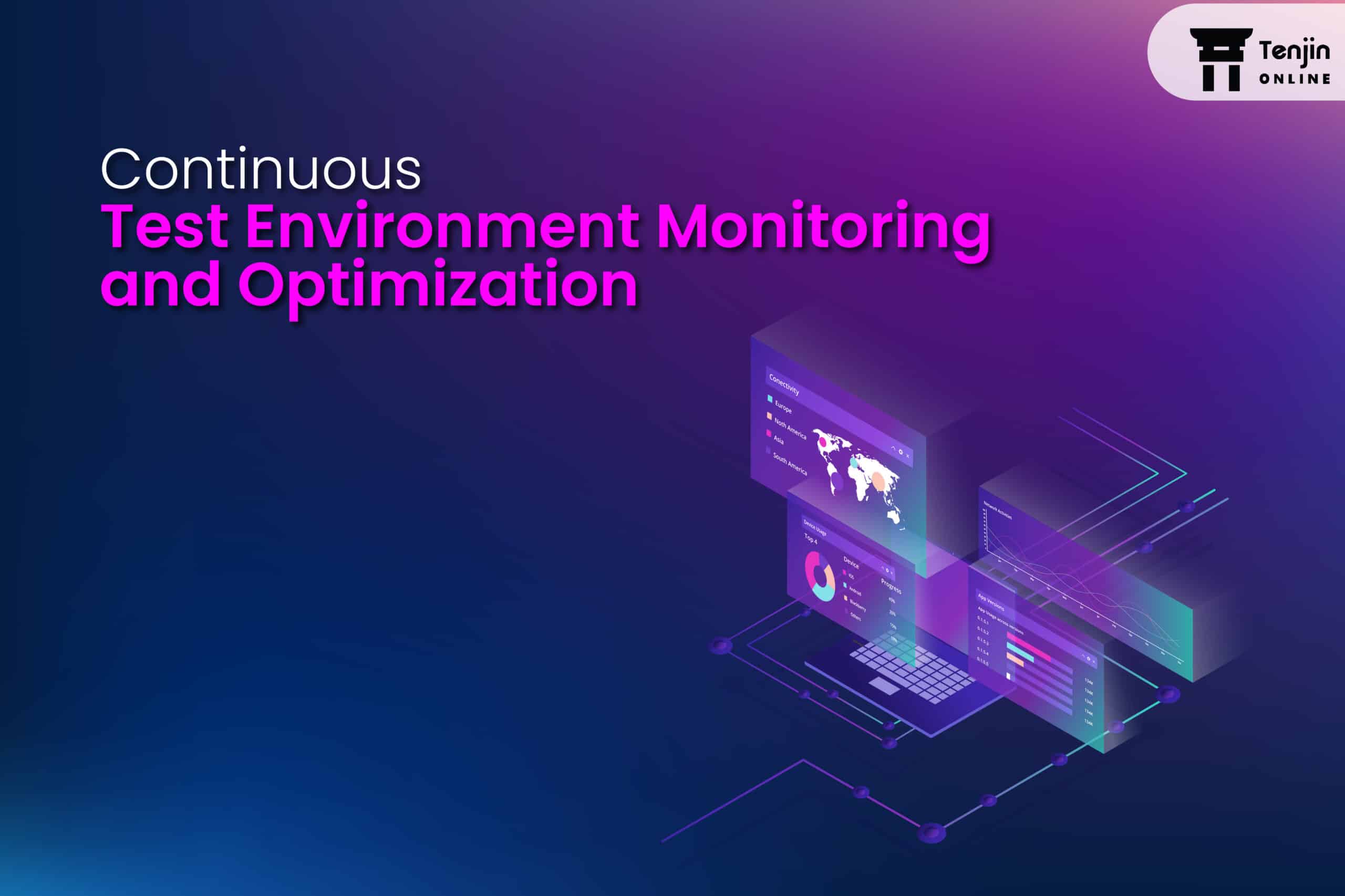
In the rapidly evolving software development industry, the need for efficient and reliable testing process is of paramount importance. Testing ensures that software applications meet the desired quality standards and function as expected. However, setting up a robust testing environment and maintaining its effectiveness can be challenging. This is where continuous test environment monitoring and optimization play a critical role.
Continuous test environment monitoring involves examining various aspects of the testing infrastructure, such as hardware resources, software configurations, network connectivity, and test data availability. By continuously monitoring these factors, teams can detect and address issues promptly, minimizing disruptions to the testing process and improving overall productivity. In this article, let’s understand the significance of test environment monitoring and optimization.
What is Test Environment Monitoring?
Test environment monitoring refers to the practice of continuously observing, analyzing, and managing the test environments used in software testing processes. It involves monitoring various components, such as hardware, software, networks, databases, and configurations, to ensure they are functioning correctly and are aligned with the testing requirements.
The primary goal of test environment monitoring is to identify and resolve issues that may impact the accuracy and reliability of the testing process. By closely monitoring the test environment, teams can detect and address problems promptly, thereby improving the efficiency and effectiveness of software testing.
Significance of Test Environment Monitoring
Early detection of defects: Test environment monitoring allows teams to proactively identify and resolve issues before they impact the testing process. This helps in reducing the time and effort spent on troubleshooting and minimizes the risk of project delays.
Improved test coverage: By monitoring the test environment, teams can ensure that all necessary components and configurations are in place for comprehensive test coverage. This includes verifying the availability of required databases, third-party integrations, and network connections.
Enhanced test reproducibility: Test environment monitoring helps in maintaining consistency and repeatability in the testing process. By monitoring and controlling the environment, teams can ensure that tests produce consistent results across different runs, enabling better analysis and debugging.
Efficient resource utilization: Monitoring the test environment allows teams to optimize resource allocation. By identifying unused or underutilized resources, teams can make informed decisions regarding resource allocation and prevent unnecessary costs.
Key Aspects of Test Environment Monitoring
Performance monitoring: This involves tracking the performance of the test environment components, including servers, databases, and network connections. It helps identify bottlenecks, resource constraints, or configuration issues that may affect the performance of the testing process.
Availability monitoring: Ensuring the availability of critical components is essential for uninterrupted testing. Availability monitoring involves monitoring servers, databases, services, and APIs to promptly detect any downtime or service disruptions.
Configuration management: Keeping track of the configurations and dependencies of the test environment is crucial for maintaining consistency. Configuration management involves monitoring and managing the software versions, patches, libraries, and configurations used in the test environment.
Security monitoring: Test environments may contain sensitive data or simulate real-world scenarios. Therefore, security monitoring is essential to identify any vulnerabilities or breaches that may compromise the integrity and security of the testing process.
Automated alerts and notifications: Test environment monitoring often involves setting up automated alerts and notifications. This ensures that the relevant stakeholders are promptly informed about any critical issues, allowing them to take immediate action and minimize the impact on the testing process.
There are several key components to consider when implementing continuous test environment monitoring. Firstly, real-time monitoring tools are essential for capturing and analyzing data on the health and performance of the testing environment. These tools can provide insights into resource utilization, system availability, and any bottlenecks or constraints that may affect testing activities.
Additionally, automated alerts and notifications can be set up to promptly notify the relevant stakeholders in case of any abnormalities or critical issues. This ensures that the team can take immediate action and prevent potential delays or failures in the testing process.
Furthermore, the continuous monitoring of test data availability is crucial. Test data plays a vital role in validating software functionality, and any issues with data provisioning can lead to inaccurate test results. By monitoring the availability and integrity of test data, teams can ensure that the testing environment remains reliable and produces accurate outcomes.
The Need for Test Environment Optimization
Software applications today are becoming increasingly complex, requiring robust testing methodologies to identify and rectify potential issues before deployment. A well-optimized test environment can expedite the testing process, enabling faster feedback loops and reducing time-to-market. Additionally, a highly accurate testing environment helps identifying defects and vulnerabilities that may arise in real-world scenarios, ensuring the software performs as intended.
Benefits of Test Environment Optimization
Enhanced Collaboration: Test environment optimization improves collaboration among development and testing teams. Version control, configuration management, and automation practices enable seamless sharing, tracking, and reporting.
Increased Efficiency: Optimized test environments streamline testing processes, reducing manual effort, and accelerating feedback cycles. This efficiency gain allows development teams to deliver software faster, keeping up with market demands and user expectations.
Improved Test Coverage: A well-optimized test environment facilitates comprehensive test coverage, enabling the identification of defects, performance issues, and security vulnerabilities. This leads to higher-quality software and enhanced customer satisfaction.
Cost Savings: Optimized test environments minimize resource wastage and infrastructure overhead. Organizations can avoid unnecessary hardware investments and reduce maintenance costs by leveraging Cloud-based solutions and automation.
Conclusion
Continuous test environment monitoring and optimization are essential for maintaining a robust and reliable testing infrastructure. By monitoring various aspects of the environment, promptly addressing issues, and implementing optimization strategies, organizations can ensure smooth and efficient testing processes, ultimately delivering high-quality software products to their users.
By proactively monitoring and managing the test environment, teams can identify and resolve issues early, enhance test coverage, improve reproducibility, and optimize resource utilization. It is crucial for organizations to implement a robust test environment monitoring strategy and leverage appropriate monitoring tools to achieve reliable and efficient software testing, ultimately leading to the delivery of high-quality software products.


